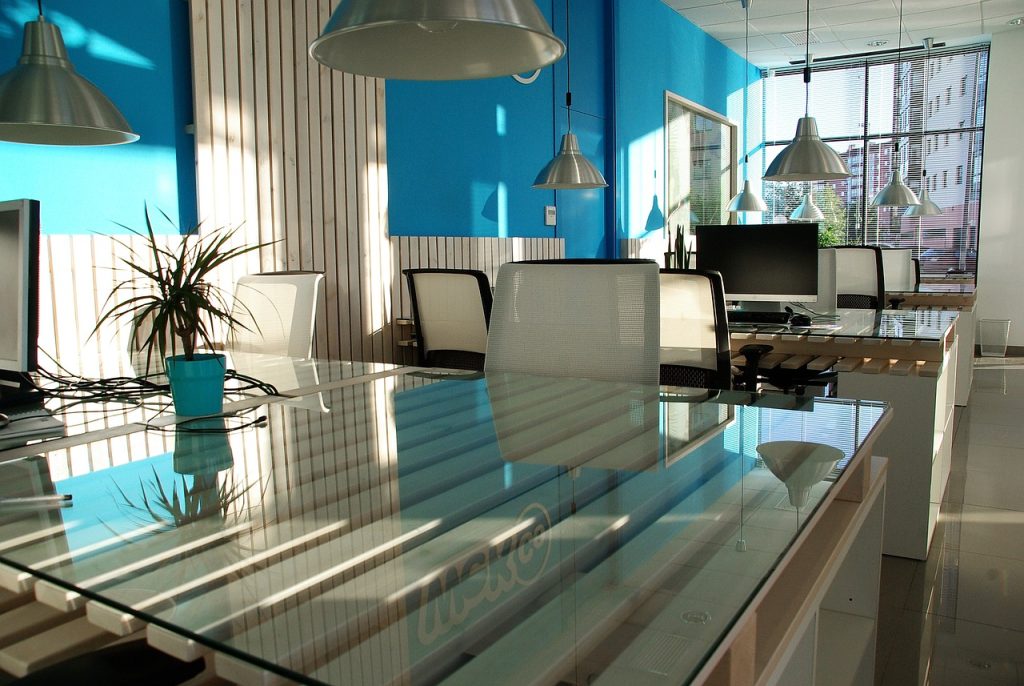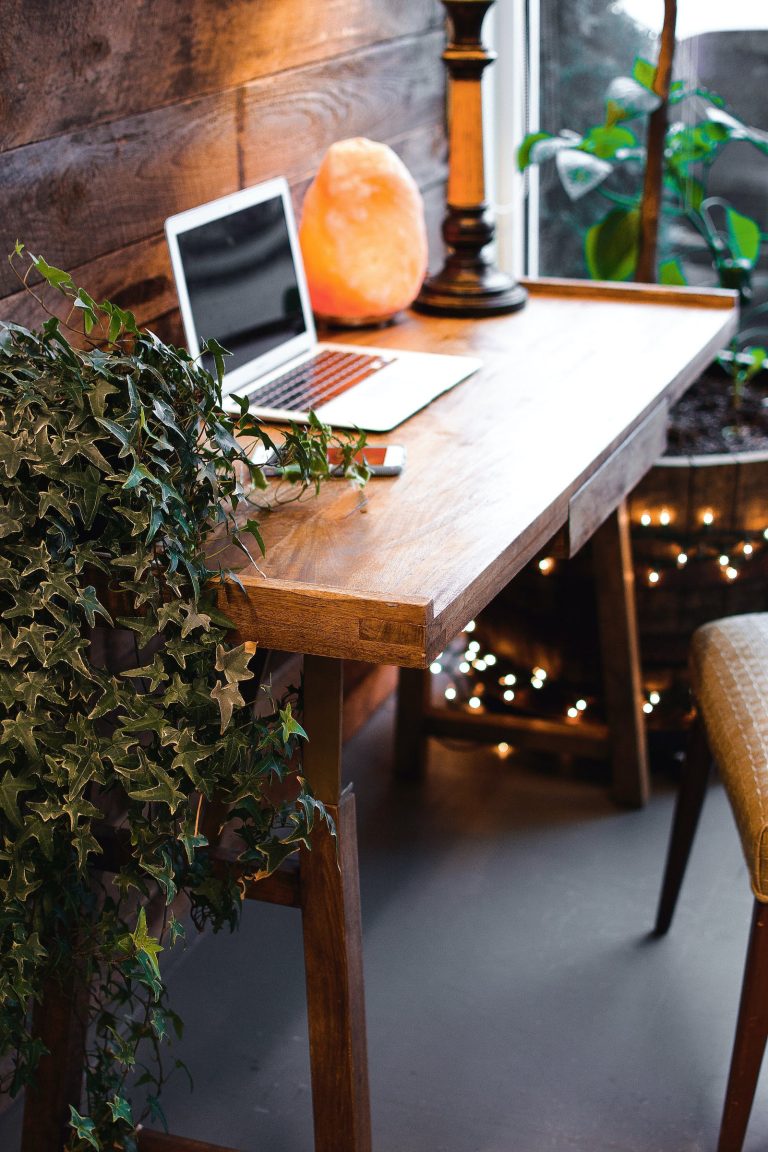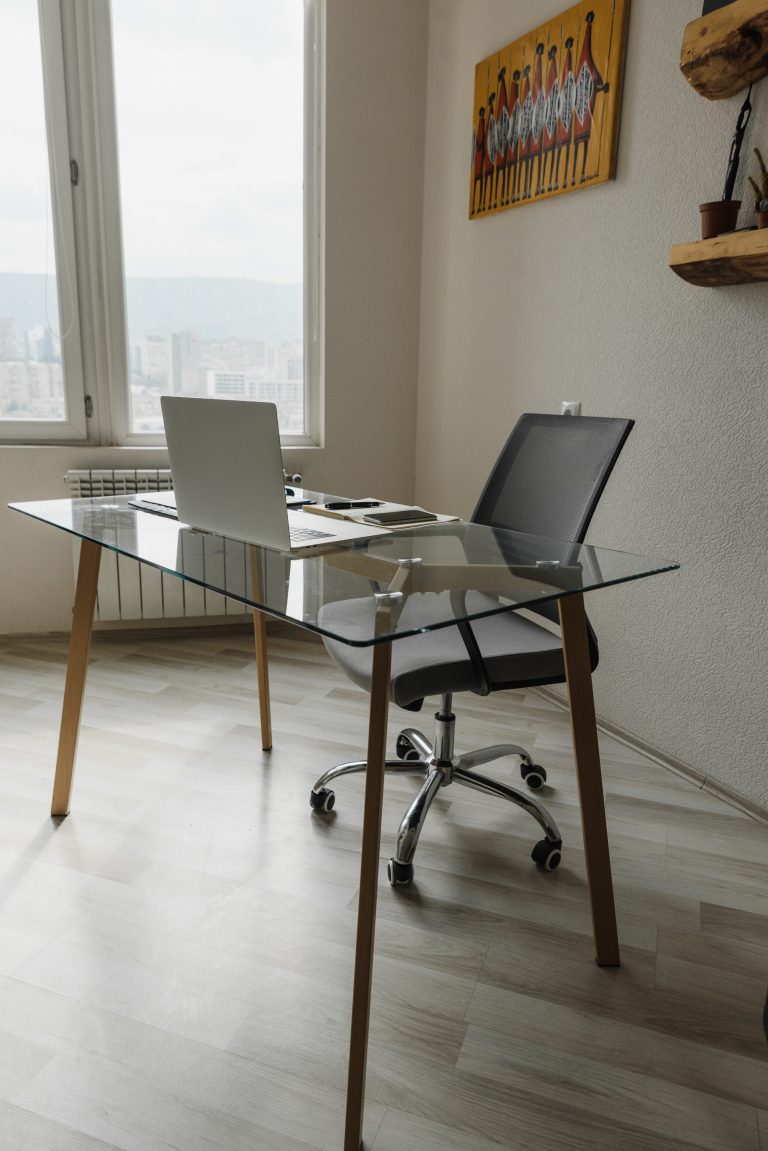
Guide to the best office materials: How to choose the right one ?
The materials used for office furniture are crucial in determining its durability and visual appeal.
As a representation of a brand’s identity, an office should not only be functional but also aesthetically pleasing.
This article aims to provide a comprehensive guide to various office furniture materials to assist you in making an informed decision.
Criteria to consider
First is, durability. Offices are subject to frequent use, meaning they must stand the test of time.
If you attach importance to this feature, you should know that wood, mainly oak is renowned for its robustness and longevity.
Next, consider the visual aspect. The design of your office reflects your brand identity. You convey the image that reflects you depending on the materials you choose.
For example, a glass desk evokes a modern style, while raw wood suggests a minimalist design.
Thirdly, the maintenance of materials. Elements such as veneer, melamine or leather require special care to maintain appearance.
Leading office materials
Wooden office furniture
Benefits
Timeless and essential, wood is one of the most sought-after components in office design.
Its natural charm brings warmth and authenticity to any professional workspace. Whether oak or plywood, each wood type has its distinct texture and character.
The major advantage of wood lies in its durability and ecological aspect, being a renewable resource.
Properly maintained, a wooden desk can last for decades. What’s more, wood offers great flexibility in terms of design.
Disadvantages
However, the wood option requires particular attention to maintenance. It is sensitive to scratches, stains and humidity.
The use of suitable coasters and protectors is therefore recommended. In addition, regular cleaning with suitable products is necessary to preserve its shine.
Note also that the cost varies according to the type and quality of wood chosen.
Depending on their variety, some types of wood are less robust than others.

Here are a few examples:
Pine: This is a soft wood, less resistant to knocks and scratches than hardwoods. It is often used for low-cost furniture.
Fir: Like pine, fir is a soft wood. It is often used for carpentry and interior joinery.
Poplar: This is a light wood, less resistant than other types. It is frequently chosen for the manufacture of plywood.
In contrast, woods such as oak, beech and teak are renowned for their strength and durability.
Opt for certified wood, such as FSC, for eco-responsible durability, guaranteeing sustainable forest management.
Cleaning
For optimum wood preservation, we recommend regular dust removal. Gentle cleaning with soapy water or specific wood cleaning products can also be done.
It’s best to use a soft cloth and avoid applying products directly to the wood. From time to time, applying a wax can be beneficial in preserving the wood’s shine.
Melamine desk
Benefits
Melamine is the preferred choice for those seeking an economical solution without sacrificing aesthetics.
Made from particleboard coated with a resin of the same name, it offers excellent scratch resistance.
Moreover, it comes in a wide range of colours and offers considerable scope for personalization.
Disadvantages
Despite its economy, melamine can’t match the longevity of solid wood.
It is sensitive to humidity and must be protected from water to avoid swelling or warping.
Cleaning
Avoid water or aggressive cleaning agents that could damage the surface when cleaning.
Furniture in MDF (Medium Density Fiberboard)
Benefits
This material is cost-effective and ideal for those looking for good value for money.
Its smooth surface is particularly well-suited to various finishes, from painting to coating.
What’s more, it’s robust enough to withstand heavy loads.
Disadvantages
While it can be cost-effective, it is generally less durable than solid woods like oak or teak, although it can still provide decent durability for its price point.
Cleaning
Regular, gentle care is recommended. Avoid excessive moisture to preserve its shape and structure.

Glass office furniture
Benefits
Elegant and contemporary, this material instantly transforms the ambience of a room, giving it a modern touch.
Its transparency offers an enlarged sense of space, making work areas brighter and airier.
The tempered model is an improved version with enhanced robustness.
Thanks to a specific heat treatment, it is designed to withstand greater impact than the traditional version.
Disadvantages
Despite its beauty, it’s not free from fragility. Even in its hardened version, although robust, delicate handling is required.
Scratches can easily appear, and violent impacts with sharp objects can cause breakage.
What’s more, it tends to show fingerprints and dust quickly.
Cleaning
We recommend avoiding overly aggressive cleaning products. A simple hot water and white vinegar solution can remove stains and fingerprints.
A simple solution of hot water and white vinegar can remove stains and fingerprints.
A microfiber cloth is recommended for cleaning, as it offers a softness that protects the glass from scratches while ensuring impeccable cleanliness.
Metal desk
Benefits
This material is a modern option for office furniture, offering a distinct industrial touch to any workspace.
Known for its robustness, it stands out for its ability to withstand heavy loads.
In addition to its durability, its sleek design makes it easy to integrate, whether the environment is minimalist or sophisticated.
Disadvantages
Despite its many advantages, this material also presents challenges. Its surface, though solid, is susceptible to scratches, especially if it comes into contact with sharp objects.
Moreover, some find these desks cold to the touch, reducing can reduce comfort in certain situations.
In terms of price, although robust, it can cost more than other materials, reflecting its longevity.
Cleaning
Frequent cleaning with a soft cloth is recommended, as dust is more visible on this surface.
Corrosive products should be avoided, as they damage the metal finish. Instead, use a slightly damp cloth to remove marks and stains.
Frequently asked questions
What's the difference between melamine and MDF?
Melamine :
- Melamine is not a material per se. Rather, it’s a coating.
- It consists of a sheet of paper impregnated with melamine resin, glued to a support, which can be MDF, particleboard or other panel types.
- This covering is appreciated for its scratch and impact resistance, as well as for its ease of maintenance.
- It is available in various of patterns and colours, including imitations of wood, stone, etc.
MDF (Medium Density Fiberboard) :
- MDF is a composite wood panel.
- It is made from wood fibres mixed with resins, then pressed at high temperature to form panels.
- Unlike particleboard, MDF has a smooth surface, making it ideal for painted finishes.
- Its dense structure makes it heavier and generally stronger than particleboard, but less so than solid wood.
How do you distinguish between a solid wood desk and a veneered desk?
Weight: Solid wood furniture is generally heavier due to its higher density.
Edges: Solid wood worktops often have thicker edges than veneered desks.
Price: Solid wood is generally more expensive due to the quantity of wood used.
Is a metal desk durable ?
Metal desks stand out for their durability. This sturdy material resists wear and tear and offers excellent longevity.
Its durability makes it a popular choice for dynamic work environments and spaces where strength is essential.
However, it’s important to take certain precautions to maintain its durability.
For example, if you want to avoid scratches, we recommend using coasters or mats under heavy objects.
What is teak wood ?
Teak wood is a precious wood from Southeast Asia.
It is particularly appreciated for its strength and resistance to humidity.
Teak is often associated with luxury outdoor furnishings. However, thanks to its rich grain and warm colour, it is also prized for high-end offices and interior fittings.
Thanks to its durability, teak can withstand daily wear and tear, an essential asset in a busy office environment.